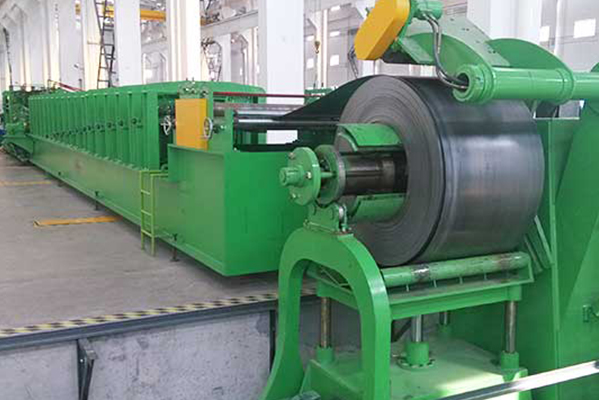Navigation Menu
Contact Us
- Email:
- info@wxavatar.com
- Address:
- Yurong Village, Yuqi Street, Huishan District, Wuxi, China.
Release Date:Jun 11, 2025 Visit:40 Source:Roll Forming Machine Factory
The construction of steel silos has seen a significant evolution, moving from established, labor-intensive techniques to more automated, specialized machinery. When considering the production of these large-scale storage vessels, a key question arises: how do modern roll forming machines stack up against the methods that have been employed for decades?

Traditional steel silo fabrication typically involves a series of distinct, often manual, steps. This usually begins with receiving flat steel sheets, which are then marked, cut to size using methods like shearing or flame cutting, and subsequently bent into their curved segments using press brakes or rolling machines. These individual segments are then transported to the construction site where they are assembled and joined, often through extensive welding. This process can be quite time-consuming, requiring skilled personnel for each stage, from cutting and forming to fitting and welding. The precision of the final structure often relies heavily on the accuracy of these individual manual operations and the expertise of the fabrication team.
In contrast, steel silo roll forming machines represent a more integrated and continuous approach. These machines are designed to take flat steel coil or sheet and progressively form it into the desired profile, often in a single, unbroken operation. Through a series of precisely engineered rollers, the steel is gradually shaped, yielding consistent and accurate panels. Some advanced systems can even form the entire silo shell directly on-site, spirally forming and joining the steel strips as they emerge from the machine. This method significantly reduces the need for extensive pre-cutting and individual bending operations. The integration of forming and often seaming within a single machine streamlines the workflow and reduces the reliance on multiple separate pieces of equipment and manual interventions.
One notable difference lies in consistency and precision. Roll forming machines are engineered to produce highly uniform sections, with minimal variations from one piece to the next. This level of repeatability is inherently difficult to achieve with manual bending and cutting, where slight deviations can accumulate over the course of a large project. The automated nature of roll forming helps to maintain tight tolerances, which can contribute to a more accurately constructed silo.
Another aspect to consider is the pace of work. With traditional methods, each stage adds to the overall project timeline. The sequential nature of cutting, bending, transporting, and then assembling can lead to extended project durations. Roll forming, particularly on-site spiral forming, can offer a more rapid construction pace. The continuous output of formed panels or the direct formation of the silo structure can significantly accelerate the assembly phase, as sections are produced in a continuous flow, ready for immediate integration.
Furthermore, the operational requirements differ. Traditional fabrication demands a sizable workspace for handling large steel sheets, along with dedicated areas for cutting, bending, and assembly. Roll forming machines, especially those used for on-site fabrication, can often operate within a more confined footprint, as they efficiently process material directly into the desired form. This can be a practical advantage when site space is limited.

In conclusion, while traditional methods for steel silo fabrication have a long history and remain viable for certain applications, roll forming machines offer a distinct set of advantages in terms of consistency, operational speed, and streamlined workflow. These modern machines represent a different approach to constructing steel silos, reflecting advancements in manufacturing techniques and operational efficiency.